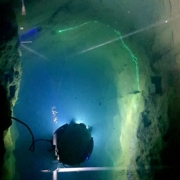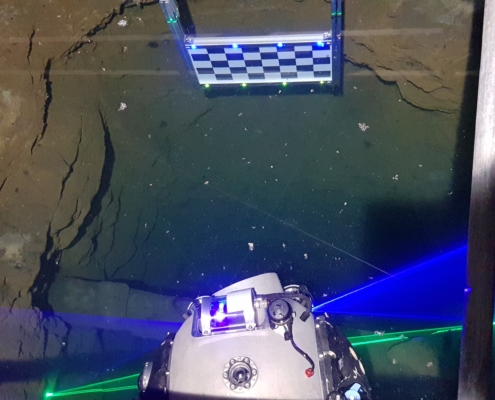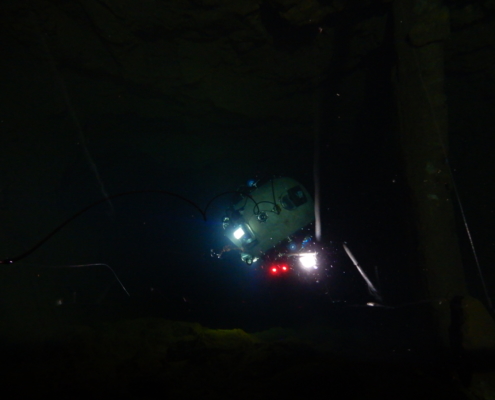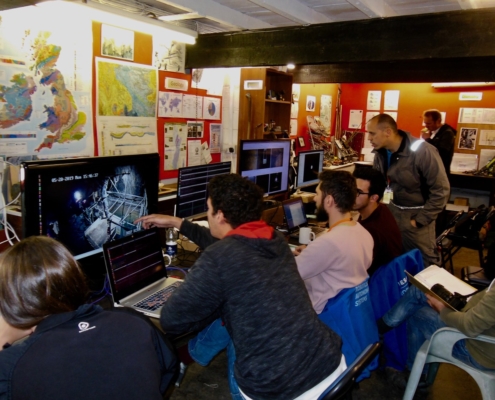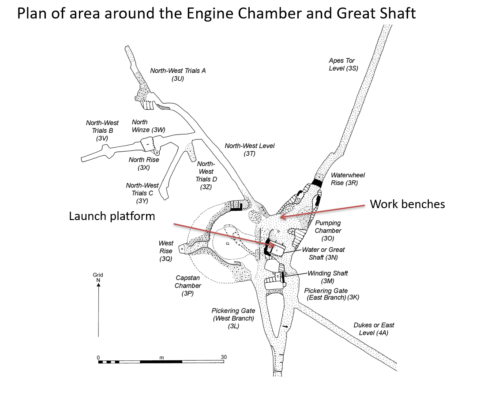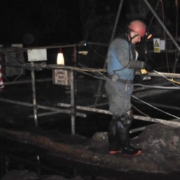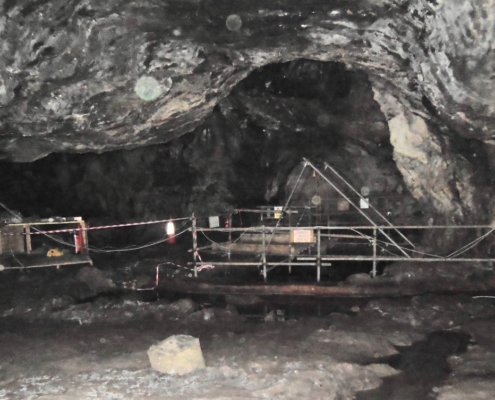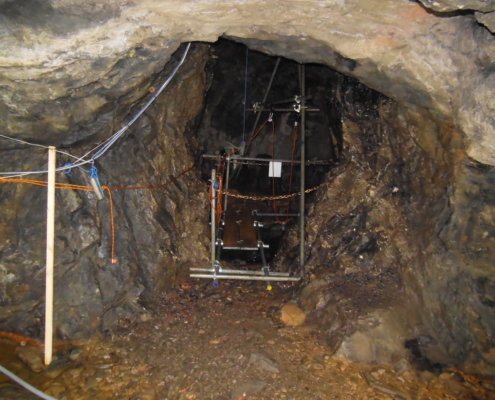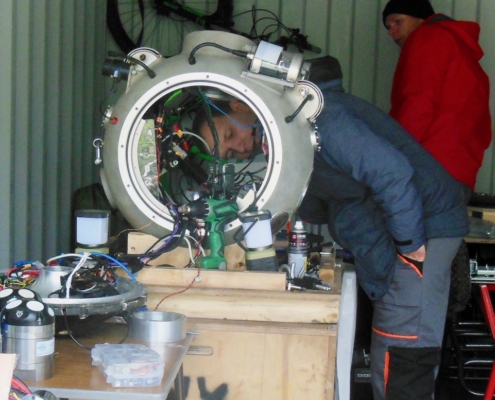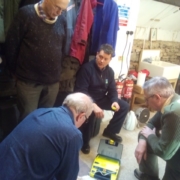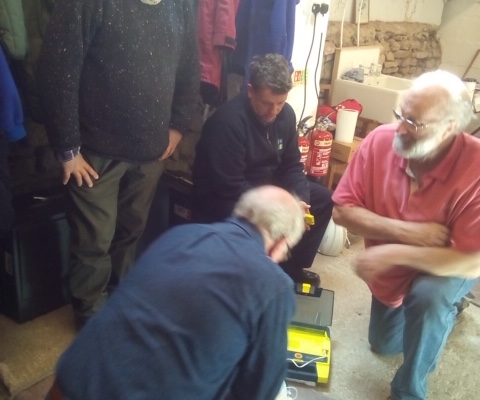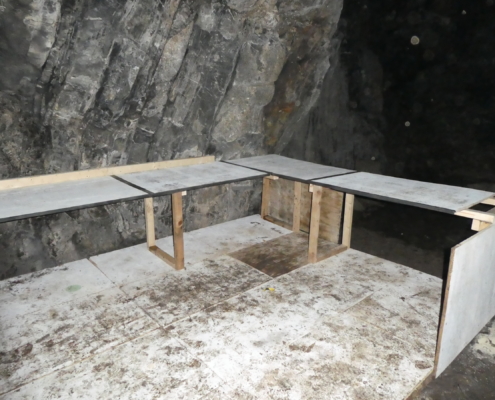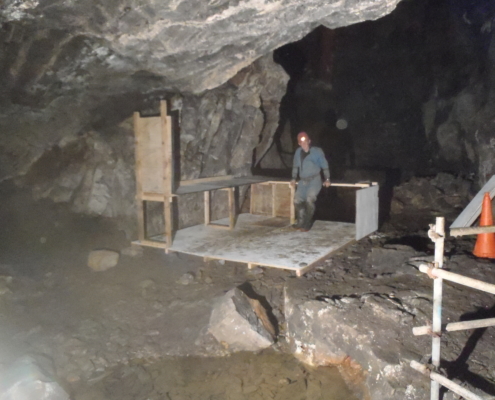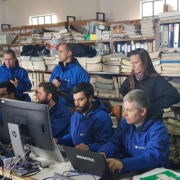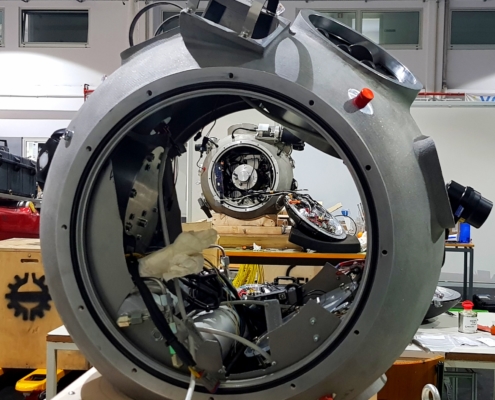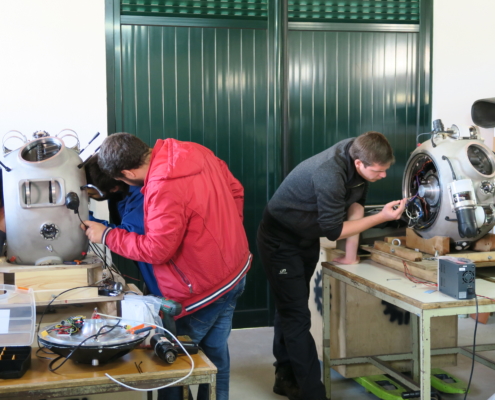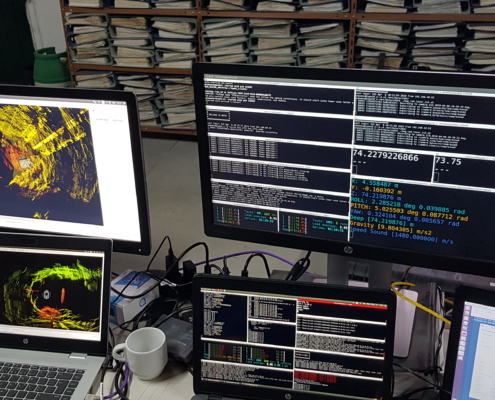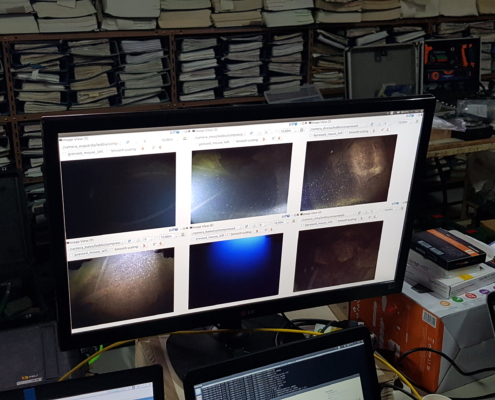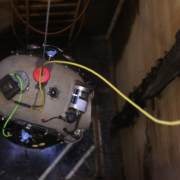Summary of the first week of field work at the Ecton mine, UK
The UNEXMIN team is in the UK, at the Ecton mines, to once again test its innovative exploration technology in real life conditions, after the field tests at Kaatiala, Idrija and Urgeiriça mines. The final aim of this trial is to map the most important flooded sections of the underground mine, at the same time as the team improves the operability of the surveying process. The first week on the field with the UX-1 robot was as follows:
- 13th of May (Monday): The first week of trials officially started on Monday, after a week of preliminary setups. The UNEXMIN team did some basic workings on both UX-1a and UX-1b robots. This was needed in order to have the robots ready for diving. All instruments and components of the robot were checked and repaired where needed.
- 14th to 16th of May (Tuesday to Thursday): Doing work on both the UX-1 robots, the control cabin with setting up connections between this and the work station inside the mine. Due to unexpected conditions, work got generally delayed, and the first official dive with the UX-1 robot only happened on Friday. Durind these days, the team strenghtened the operability of the robot, even without dives.
- 17th of May (Friday): The first dive with UX-1 was then done on this day. During this dive, the robot went up to a depth of 60m, through the Pumping shaft (also know as Great shaft). This was a highly successful dive: a lot of previously unrecorded geology and archeology was gathered from UX-1’s instrumentation. The UNEXMIN team found a big, interesting revelation at 58m: a very wide opening was identified, from which, EMET’s archeologist John Barnatt, believes to be a branch of the main mineral pipe – unexpected in that position.
- 18th of May (Saturday): Similarly to the Friday, the UX-1 robot descended until the 60m mark through the same shaft. This time, the main purpose was to test the robot capabilities such as movement, control and rapid descent. Most of the dive was achieved “nose down”, where the UX-1 robot moves with its front pointing downwards in a very challenging way.
- Sunday 19th (Sunday): Day-off dedicated to sighseeing around the Peak District. This area is known for its lead deposits in counterpart with Ecton, which is known for its copper deposits, quite unique in this geological area.
Follow @UNEXMIN on our social media channels to keep up with the most recent news on the Ecton field trials: Facebook, Twitter and LinkedIn.

